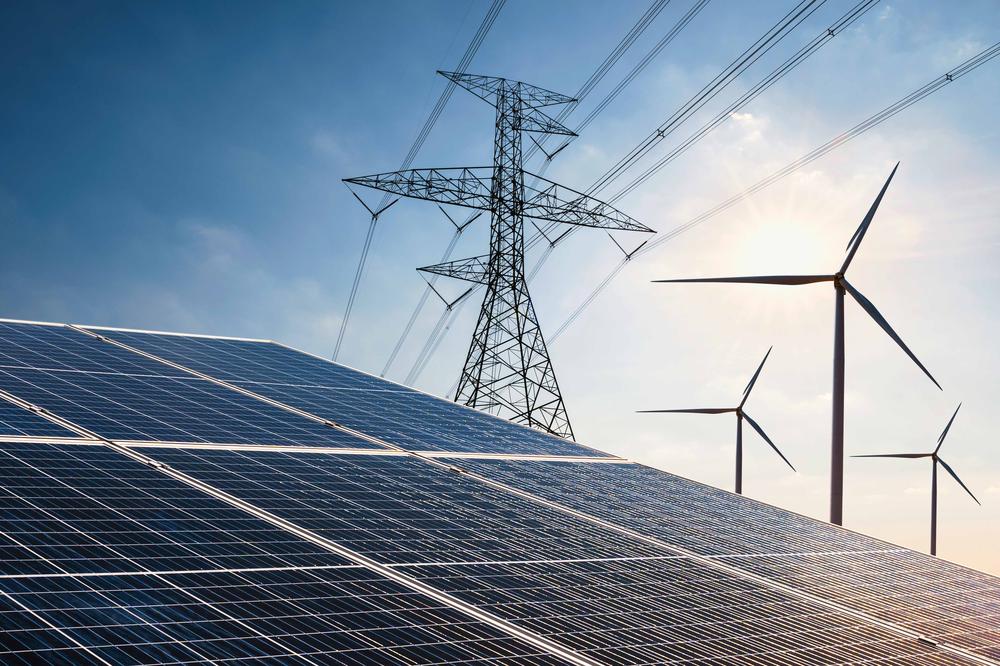
The B2B platform for the best purchasing descision. Identify and compare relevant B2B manufacturers, suppliers and retailers
Close
Filter
Result configuration
Continents
Select continent
Locations
Result types
Company type
Select company type
Industries
Select industry
Company status
Select company status preset
Number of employees
Min.
Max.
Founding year

Air Liquide Advanced Separations
Newport, United States
B
11-50 Employees
2019
Key takeaway
Air Liquide Advanced Separations (ALaS) specializes in advanced membrane separation technology, offering innovative solutions for gas separation, including their first commercial membrane for air separation and hydrogen. The company's commitment to expanding its membrane technology portfolio highlights its focus on innovation and supporting the energy transition through effective separation technologies.
Reference
Core business
Membrane Technology | Air Liquide Advanced Separations
The Most Diversified Membrane Product Portfolio in the Industry
Imtex Membranes
Mississauga, Canada
A
11-50 Employees
2007
Key takeaway
Imtex's Permylene membrane separation technology offers a highly efficient alternative to traditional methods for olefin-paraffin separation and purification, making it particularly relevant for applications in gas separation within the petrochemical and refining industries.
Reference
Core business
Home — Imtex Membranes
UniSieve
Zurich, Switzerland
A
1-10 Employees
2018
Key takeaway
UniSieve membranes offer advanced solutions for efficient gas separation, emphasizing their capability in carbon capture and feedstock purification. Their membrane technology addresses critical challenges in separating gases, which is essential for enhancing sustainability and reducing costs in various applications.
Reference
Core business
Gas Separation Membranes | UniSieve
Better separation – cleaner gasses. Swiss universal molecular sieving membranes for innovative gas separation.
Looking for more accurate results?
Find the right companies for free by entering your custom query!
25M+ companies
250M+ products
Free to use
Chemdist Process Solutions
India
D
51-100 Employees
-
Key takeaway
Chemdist is a leading science, engineering, and technology company that specializes in membrane technologies, including gas separation. They have in-house manufacturing facilities for membrane systems and offer a comprehensive range of process plant services focused on delivering high-quality solutions for separation technology.
Reference
Product
Gas Separation Membranes | Chemdist Group
Chemdist Group
Deltamem Membrane Test Equipment & Testing Services
Allschwil, Switzerland
A
1-10 Employees
2016
Key takeaway
DeltaMem AG specializes in membrane gas separation technologies, particularly pervaporation and vapour permeation, which are crucial for dehydrating organic solvents in industries like pharmaceuticals and biofuels. Their expertise and innovative membrane systems are designed for efficient and sustainable separation processes.
Reference
Core business
Pervaporation | DeltaMem AG
DeltaMem AG is the world leader in pervaporation and vapour permeation membrane technologies for the dehydration of organic solvents in the pharmaceutical, biotechnology, biofuel and fine chemical industries.
SHENZHEN HUA HE SHENG TECHNOLOGY CO.LTD
Shenzhen, China
D
11-50 Employees
2019
Key takeaway
The company specializes in the development and production of advanced membrane materials, including various types of filter membranes, which are essential for efficient gas separation. Their expertise in membrane technology and commitment to innovation positions them as a key player in providing effective separation solutions across different industries.
Reference
Product
Total heat exchange membrane, Gas-gas heat exchange membrane - HHS
MTR
Newark, United States
B
101-250 Employees
1982
Key takeaway
MTR offers a comprehensive range of membrane gas separation solutions specifically designed for petrochemical plants, refineries, and gas processing facilities. Their systems are custom engineered and manufactured in Newark, California, ensuring high quality and efficiency in gas separation processes.
Reference
Core business
MTR | Membrane Separations for Industrial Processes
Me-Sep
Krakow, Poland
B
1-10 Employees
2018
Key takeaway
Me-Sep specializes in membrane technology, offering innovative solutions for the production and manufacturing of membrane systems. With over 15 years of experience, the company supports businesses in the development of separation systems for gas and liquid mixtures.
Reference
Core business
Membrane technology development • Me-Sep R&D Company
Innovative R&D company providing membrane technology solutions: membrane production, module manufacturing, construction of separation systems.
PCI Gases
United States
B
51-100 Employees
1984
Key takeaway
The company, PCI, specializes in the design and manufacture of on-site oxygen and nitrogen generators, utilizing nitrogen separation membrane technology. Their innovative systems cater to various markets, effectively producing gases at the point of use and eliminating supply chain challenges.
Reference
Product
Membrane Technology - PCI Gases
Chemtron Science Laboratories Private Limited
India
D
51-100 Employees
1996
Key takeaway
The company offers a range of gas-related products, including a membrane-based nitrogen generator, which is particularly relevant to membrane gas separation technologies. Their commitment to innovation and quality in gas handling and measurement supports the development of clean and safe environmental solutions.
Reference
Product
Memberane Based N2 Generator
Technologies which have been searched by others and may be interesting for you:
Membrane gas separation is a process that uses selective permeable membranes to separate gases based on their molecular size and diffusivity. This technology is widely used in various industries, including natural gas processing and air separation, due to its energy efficiency and reduced carbon footprint compared to traditional separation methods. The membranes allow certain gases to pass through while blocking others, effectively concentrating the desired gas stream. For example, in oxygen separation from air, the membrane selectively allows oxygen molecules to permeate faster than nitrogen molecules, resulting in a purified oxygen product. This method is not only cost-effective but also offers a compact design, making it suitable for various applications in the energy and chemical sectors.
Membrane gas separation operates on the principle of selective permeability, where certain gases can pass through a membrane while others are blocked. The process involves the use of a polymer or ceramic membrane that has specific pore sizes or chemical properties designed to allow the desired gas to permeate more readily than unwanted gases. When a gas mixture comes into contact with one side of the membrane, the components interact with the membrane material. The gas with a smaller molecular size or higher solubility tends to diffuse through the membrane faster. This results in a concentration gradient where the desired gas accumulates on one side while the other gases remain on the feed side. Overall, this technology is efficient and effective for applications like natural gas processing, air separation, and hydrogen recovery.
1. Energy Efficiency
Membrane gas separation processes typically require less energy compared to traditional separation methods like cryogenic distillation. This efficiency leads to lower operational costs and a reduced carbon footprint.
2. Compact Design
Membrane systems are generally more compact than other separation technologies. This space-saving design allows for easier integration into existing facilities and reduces the overall footprint of the gas separation unit.
3. Selectivity
Membranes can be engineered to selectively allow certain gases to pass while retaining others. This specificity enables precise separation, making the process highly effective for various applications, including natural gas processing and carbon capture.
4. Low Maintenance
Membrane systems often require less maintenance than mechanical systems due to fewer moving parts. This reliability contributes to lower downtime and maintenance costs in industrial operations.
5. Scalability
Membrane gas separation technologies can be easily scaled up or down, accommodating varying production needs. This flexibility allows providers to adapt to changing market demands efficiently.
Numerous industries gain significant advantages from membrane gas separation technology.
1. Oil and Gas
This sector utilizes membrane systems for natural gas processing, where impurities like CO2 and H2S are efficiently removed to enhance gas quality.
2. Chemical Manufacturing
In chemical production, membrane gas separation aids in the recovery of valuable gases and the separation of reactants and byproducts, optimizing processes and reducing waste.
3. Food and Beverage
This industry benefits from membrane technology for oxygen removal and carbon dioxide enrichment, which extends the shelf life of products and maintains freshness.
4. Environmental Applications
Membrane separation is crucial in air pollution control, where it helps in capturing greenhouse gases and other emissions, contributing to cleaner air.
5. Hydrogen Production
In hydrogen production, membranes are used to purify hydrogen from various feedstocks, ensuring high purity levels for fuel cells and other applications.
Implementing membrane gas separation technology presents several challenges that can impact efficiency and effectiveness. One significant issue is selectivity, where achieving the desired separation of gases can be difficult due to the permeation rates of different components. If the membrane material does not adequately differentiate between gases, the purity of the separated product may be compromised. Another challenge is membrane fouling, which occurs when impurities or particulates accumulate on the membrane surface. This can lead to reduced performance over time, necessitating regular maintenance or replacement of membranes. Additionally, scalability can be a concern, as systems designed for small-scale applications may not perform efficiently when scaled up for industrial use. Addressing these challenges requires ongoing research and development in membrane materials and system design.
Some interesting numbers and facts about your company results for Membrane Gas Separation
| Country with most fitting companies | United States |
| Amount of fitting manufacturers | 10000 |
| Amount of suitable service providers | 8243 |
| Average amount of employees | 11-50 |
| Oldest suiting company | 1982 |
| Youngest suiting company | 2019 |
20%
40%
60%
80%
Some interesting questions that has been asked about the results you have just received for Membrane Gas Separation
What are related technologies to Membrane Gas Separation?
Based on our calculations related technologies to Membrane Gas Separation are Water/Ocean Cleaning Technologies, Waste Management, Renewable Energy, Sustainable Fashion, Smart Grid
Which industries are mostly working on Membrane Gas Separation?
The most represented industries which are working in Membrane Gas Separation are Other, Oil, Energy and Gas, Manufacturing, Chemicals, Machinery Manufacturing
How does ensun find these Membrane Gas Separation Companies?
ensun uses an advanced search and ranking system capable of sifting through millions of companies and hundreds of millions of products and services to identify suitable matches. This is achieved by leveraging cutting-edge technologies, including Artificial Intelligence.